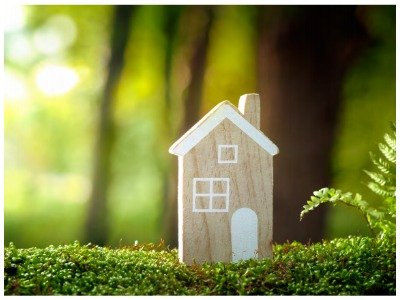Eco warriors?

With a number of major law firms in Portugal moving offices in recent years, many have taken the opportunity to make their workspaces more environmentally friendly
 The cries of ‘climate emergency’ are intensifying. And so the pressure is mounting on all organisations to ensure that they are doing as much as possible to ensure their activities are as environmentally friendly as possible. One way in which they can do this is by introducing eco-friendly features in their buildings. A significant number of the leading law firms in Portugal have moved offices in recent years and this have given them a great opportunity to take steps to make their premises as ‘green’ as they can. The benefits of reducing the environmental impact of your office space are numerous. It cuts your firm’s costs by reducing energy, water and paper use, but this is only part of the story. Law firms are also well aware that being proactive on green issues is good for business. Adopting demonstrable measures to protect the environment conveys to clients the essence of the firm’s culture and the way it goes about its business. An excellent environmental reputation not only attracts clients, it also helps law firms to attract and retain the best lawyers, it also helps with staff engagement. Luís do Nascimento Ferreira, partner at Morais Leitão, which recycled six tonnes of paper and cardboard in 2018, says that effective environmental policies “enhances our relationships with lawyers and staff, suppliers and clients”.
The cries of ‘climate emergency’ are intensifying. And so the pressure is mounting on all organisations to ensure that they are doing as much as possible to ensure their activities are as environmentally friendly as possible. One way in which they can do this is by introducing eco-friendly features in their buildings. A significant number of the leading law firms in Portugal have moved offices in recent years and this have given them a great opportunity to take steps to make their premises as ‘green’ as they can. The benefits of reducing the environmental impact of your office space are numerous. It cuts your firm’s costs by reducing energy, water and paper use, but this is only part of the story. Law firms are also well aware that being proactive on green issues is good for business. Adopting demonstrable measures to protect the environment conveys to clients the essence of the firm’s culture and the way it goes about its business. An excellent environmental reputation not only attracts clients, it also helps law firms to attract and retain the best lawyers, it also helps with staff engagement. Luís do Nascimento Ferreira, partner at Morais Leitão, which recycled six tonnes of paper and cardboard in 2018, says that effective environmental policies “enhances our relationships with lawyers and staff, suppliers and clients”.
What measures have leading Lisbon law firms introduced to make their offices more eco-friendly?
Abreu Advogados Eco-features. ‘Presence detectors’ that turn off lighting when rooms are not in use; light levels adjusted according to occupancy and levels of daylight; recycling bins for paper and plastic; temperature control sensors for adapting room temperatures; water pipe monitoring system to check losses every 15 minutes; paperless project Results. Paper consumption reduced by 65 per cent in last three years; Carbon dioxide emissions reduced by around three per cent in last four years despite move to a new office that has more than double the floorspace of its previous premises.
Morais Leitão Eco-features. Energy efficient lighting; air conditioning systems that disconnect automatically during off-peak hours; recycled six tonnes of paper and cardboard last year; water consumption minimised due to special filters on water appliances; only double-sided printing permitted; use of video conferencing equipment to minimise travel Results. Energy consumption reduced by 5 per cent per year; prevented the use of 780,000 sheets of paper for wasted printing.
VdA Eco-features. Building equipped with thermal solar panels that use renewable energy to heat water for air-conditioning and hot water systems; LED [lightemitting diode] lighting; presence detectors that turn off lights when room not in use; common spaces lighting automatically optimized taking into account occupation and outdoor light levels; cafeteria has separate waste bins for recyclable cups and packaging, and all waste cooking oil is collected and recovered; special collection point for small electrical appliances, batteries and printer toners Results. Electricity consumption reduced by 80 per cent.
SRS Advogados Eco-features. Employees issued with metal bottles and mugs to reduce use of disposable cups; selecting an energy supply company with a renewable energy consumption policy; default printer setting is black and white and double sided; personal codes issued for printing; selecting office material suppliers that do not use plastic in their production process Results. Recycled more than five tonnes of paper and two tonnes of plastic; “saved more than 100 trees, 11,000 kilowatts of electricity, 100,000 litres of water, 45m3 of residual waste and more than ten tonnes of CO2 and greenhouse gases”.
What measures have leading Lisbon law firms introduced to make their offices more eco-friendly?
Miranda Eco-features. “De-lamping over-lit areas” and replacing halogen bulbs with LED bulbs; light fittings controlled by occupancy & daylight sensors and central timers; replacing disposable plastic cups for water with reusable glass; using re-usable bottles in client conferences, lunches, and other events; pre-setting default printing options at double-sided printing
Results. Costs savings as a result of LED bulbs lasting ten times longer than the bulbs previously used. A projected 10 per cent reduction in energy consumed by bulbs. Use of laptops in meetings has reduced unnecessary document printing; use of video conferencing technology reducing the need to travel.
Garrigues Eco-features. The use of glass wherever possible (office walls, cubicle walls, and partitions, for example) to make the most of natural light; regarding furniture, the firm favours wood from sustainably-managed forests that is certified by the Forest Stewardship Council; “A very large percentage of the metal components of our furniture and chairs is recycled, as is all our vinyl wallpaper”; outfitting restrooms with sensor faucets; A total of 29.5 per cent of Garrigues’ total global office space carries Leadership in Energy and Environmental Design (LEED) certification.
Results. Electricity consumption reduced by 25 per cent (288,347 kW in 2011 compared to 213,524 kW in 2018). “We forecast that, at the end of 2019, we will come in below the 200,000 kW mark.”
Linklaters Eco-features. “We are negotiating a contract to use merely energy from renewable sources with EDP”; occupancy light sensors in the offices. LED lighting being installed (half of our areas are already fitted out with this type of lighting); all bathroom taps fitted with timers, while flushing mechanisms have two discharge options; office kitchens equipped with dishwashers that “largely limit water consumption”; only glass bottles used in meetings; all team members issued with water bottle.
Results. At a global level, over a ten-year period, gas use, non-renewable energy use, business travel and waste reduced by 26 per cent; electricity use reduced by 42 per cent over the same period; at a global level, 73 per cent of electricity sourced from a 100 per cent renewable supply.
To read the article in full please download issue N.89 here












